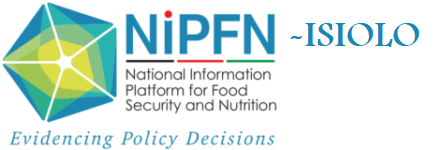- Version
- Download 270
- File Size 6.64 MB
- File Count 1
- Create Date May 30, 2024
- Last Updated May 30, 2024
County Integrated Development Plan 2023-2027
EXECUTIVE SUMMARY
The County Governments Act 2012 (Part XI) obligates each County to develop a county
integrated development plan to reflect its strategic priorities, specific goals, objectives, and a
costed implementation plan, provision for monitoring and evaluation as well as clear reporting
mechanisms. Further, the Act provides that a county integrated development plan should contain
information on investments, projects, development initiatives, maps, statistics and a resource
mobilization framework.
Isiolo County Integrated Development Plan (CIDP) 2023-27 outlines the development priorities
for the county in the next five years. It is a commitment by the county government to its citizens
in setting an economic foundation in the county. This CIDP carries forward the development
aspirations of Isiolo people from the previous CIDP 2018-2022. It sets out the county agenda for
the next five years, whose aim is enhancing sustainable socio-economic development. The
overall objective of the Isiolo CIDP 2023-2027 is to guide the county to reach a sustainable path
of economic growth and enhanced welfare of its citizens through coordinated development.
The CIDP III Preparation was through a participatory approach with the involvement of diverse
stakeholders. Citizens deliberated on their development issues, challenges and priority
interventions through public participation fora. The CIDP has six chapters, as outlined below:
Chapter one of the CIDP provides the county’s background information including inhabitants
(dominant, marginalized, minority communities), location of its headquarters, major economic
activities, whether the county is a member of a regional economic block (s) and other inter/intra
county relations.
Chapter 2 provides a review of the implementation of the previous CIDP 2018-22. It presents an
analysis of county performance in terms of revenues, expenditures and key outcomes as well as
the major challenges faced in the implementation of the plan.
Chapter 3 provides a brief spatial framework for the implementation of development projects and
programmes in the county. The chapter also indicates the progress made in the preparation of
county spatial plans.
Chapter 4 provides sector development priorities, strategies, programmes, flagship projects, and
cross-sectoral linkages.
Chapter 5 gives an overview of the county’s institutional arrangement and their specific roles
towards the implementation of the CIDP. In addition, the chapter presents the resource
mobilization and management framework, asset management, and risk and mitigation measures.
Chapter 6 outlines monitoring and evaluation process during implementation period and after.
The proposed M&E structure; data collection, analysis, reporting and learning; M&E outcome
indicators tracking; and dissemination and feedback mechanism


